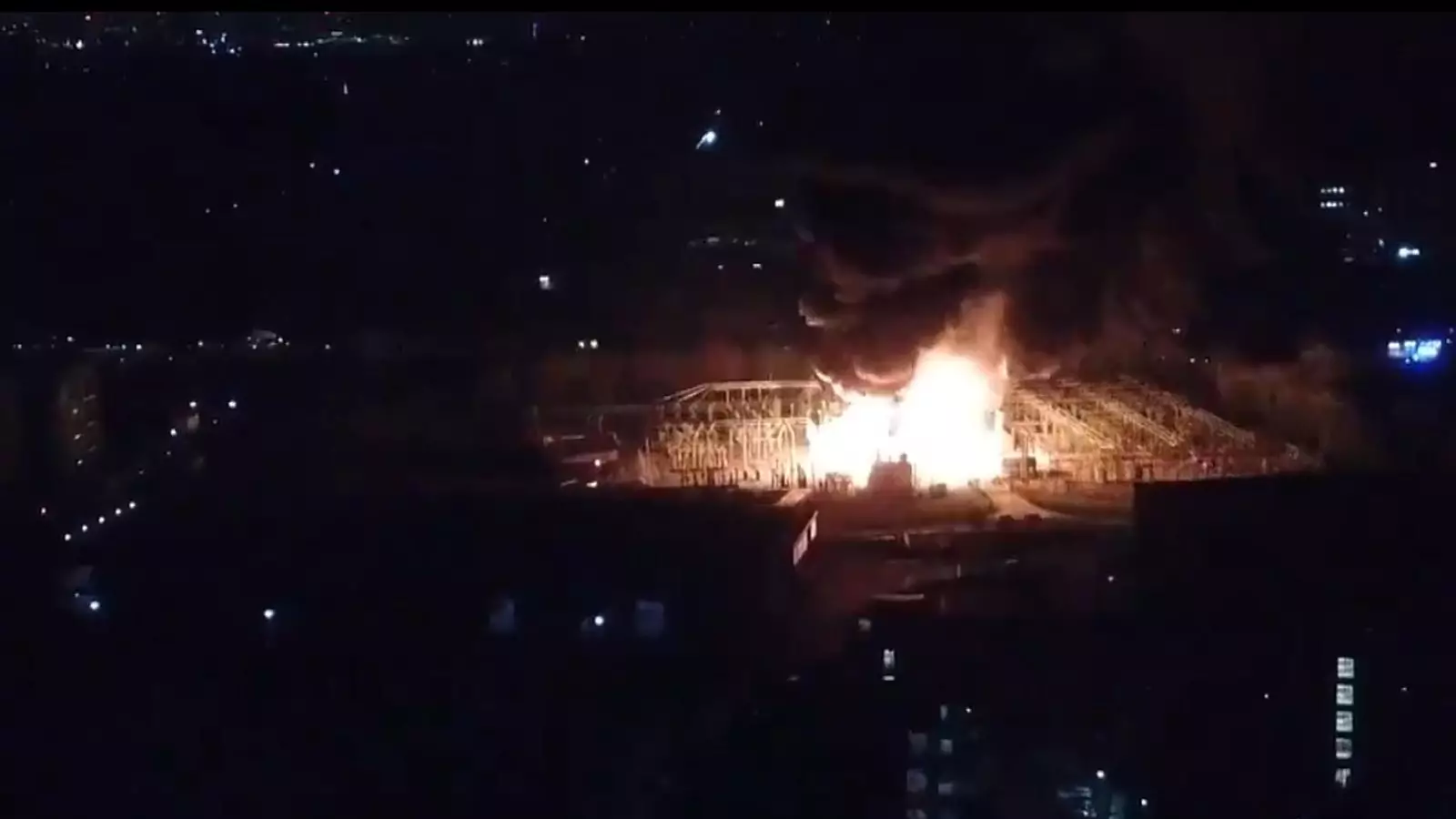Heathrow Airport, a gem of global connectivity, has found itself embroiled in a crisis that might well be described as a perfect storm of misfortune. Following a catastrophic fire at a nearby electricity substation in Hayes, power has been knocked out, leaving the airport’s operations in shambles. A spokesperson’s grim acknowledgment of a “significant power outage” encapsulates the brewing chaos, which is projected to last well into the night, stopping operations until 11:59 PM on March 21, 2025. The airport spokesperson’s decision to close safety protocols for passengers and staff is entirely justified, yet it reflects a larger issue regarding the safety standards and preparedness of critical infrastructure.
When one considers that an estimated 1,351 flights will be disrupted—including around 120 aircraft already airborne—it’s difficult to overlook the gravity of the situation. Global travel has connected the world like never before, and the sudden closure of such a pivotal airport will surely send shockwaves throughout the aviation industry. The plight of travelers, who are now advised to stay away from the airport under any circumstances, reflects not just a logistical nightmare, but a deep sense of human distress.
Airline Responses: A Clarion Call for Better Planning
British Airways, Heathrow’s most prominent carrier, has urged customers not to attempt traveling to the airport, thus further emphasizing the urgency of the situation. Blockades and diversions have already redirected planes to alternative airports like Gatwick, Paris, and Shannon in Ireland. The entire operation suggests a lack of adequate contingency planning, one that apparently did not account for a natural disaster of this magnitude.
The logistics of public transport and accommodation for stranded passengers are both potential headaches for the airline and authorities alike. Customer service teams are scrambling to communicate updated travel options, but transparency is paramount. The aviation authority and airline management must prioritize their customers by providing real-time updates that help prevent panic and confusion.
The widespread effects of the outage ripple through airline operations globally—after all, Heathrow serves as a critical juncture for international flights. If airline companies fail to act decisively, we may witness a spiral of additional delays, cancellations, and stranded travelers in transit spaces worldwide.
Local Impact: A Crisis Beyond the Skies
The fire’s impact extends beyond mere flight cancellations; it has left approximately 16,000 households in the vicinity of Hayes without power. Evacuations of nearby residents underscore the risks associated with this disaster. The flames and the dark smoke curling into the sky are visible manifestations of our reliance on electrical systems that power not only transportation hubs but our very homes.
Indeed, this crisis tests the coordination among various emergency services. The London Fire Brigade, responding with ten fire engines and around 70 firefighters, has initiated suppression efforts, yet the cause of the fire remains elusive. The uncertainty surrounding such an incident draws questions about existing infrastructure and emergency planning crucial for maintaining safety in urban environments.
Pat Goulbourne from the London Fire Brigade emphasizes that this will be a “prolonged incident.” Public safety concerns linger as residents are urged to keep doors and windows locked against smoke while grappling with the reality of living in a modern city tied to an infrastructure that can falter dramatically.
Questions of Governance and Infrastructure Readiness
This incident raises fundamental questions about the efficacy of safety regulations and infrastructure readiness in the face of potential calamities. It is time for city planners and policymakers to gauge whether current resources meet the demands of our interconnected lives. Should we not be prepared for unforeseen events like fires or electrical failures that can drastically alter daily life?
Amid the distractions and chaos, it’s essential to refocus attention on building a robust framework that will enable quicker recovery from such disasters. What seems like an isolated incident is a glaring reflection of the potential vulnerabilities present in our vital infrastructures, demanding immediate redress.
Drawing attention to these critical factors is not merely about assigning blame; it’s about fostering a dialogue that emphasizes systemic resilience in all sectors. Without taking the lessons of today seriously, we risk facing larger crises tomorrow.


Leave a Reply